Table of Contents Hide ContentsRibeye vs Sirloin: Which Delivers Better Flavor? A Complete Steak Guide
For any steak lover, the choice between a Ribeye and a Sirloin is a fundamental one. These two cuts are among the most popular and widely available on steakhouse menus and in butcher shops, yet they offer distinctly different experiences. The debate over which is superior often comes down to personal preference, but understanding the unique characteristics of each cut is the key to making the right choice for your palate and your wallet.
At the heart of the matter is a simple question: Ribeye vs. Sirloin: Which Delivers Better Flavor? The answer lies in their fundamental differences in fat content, muscle structure, and origin. This comprehensive guide will break down everything you need to know about these two titans of the beef world, helping you to make an informed decision and cook your next steak to perfection.
1. The Ribeye Steak: The King of Marbling
The Ribeye is a steak renowned for its rich flavor and tender, juicy texture. Its name is a nod to its location on the cow—it is cut from the rib section, specifically from the top of the rib primal, between the sixth and twelfth ribs. This area is not heavily used for movement, which results in a tender and fatty steak.
Anatomy and Origin
The ribeye steak is a boneless cut that is a cross-section of the longissimus dorsi muscle, which is also a primary muscle in the New York Strip. However, the ribeye is distinguished by its unique, fat-rich components. The key feature of a ribeye is the abundance of intramuscular fat, known as marbling. This marbling is a network of thin fat veins that weave through the muscle, and it is what gives the ribeye its signature flavor and texture.
A standout feature of a ribeye steak is the spinalis dorsi, also known as the “ribeye cap.” This crescent-shaped muscle sits on top of the main “eye” of the steak and is considered by many to be the most flavorful and tender part of the entire cut.
Flavor and Texture
When you choose a ribeye, you are choosing a rich, buttery, and indulgent flavor profile. The high fat content is the source of this incredible taste. As the steak cooks, the marbling melts and renders, essentially basting the meat from the inside. This process infuses the steak with an intense, beefy flavor and a luxurious, velvety texture that is often described as “melt-in-your-mouth” tender.
The flavor of a ribeye is deep and complex, thanks to the combination of the lean meat, the rendered fat, and the unique muscle structure of the rib cap. It’s a flavor that requires minimal seasoning—a simple sprinkle of salt and pepper is all that’s needed to let its natural richness shine.
Best Cooking Methods
The high fat content of a ribeye makes it incredibly forgiving and easy to cook. It can handle high heat without drying out, which is why it’s perfect for:
- High-Heat Searing: A screaming-hot cast-iron skillet or a grill can produce a beautiful, crispy crust while keeping the inside juicy and tender. The rendered fat helps to create that perfect sear.
- Reverse Searing: For thicker cuts (1.5 inches or more), this method is ideal. You cook the steak slowly over low, indirect heat first, then give it a quick, high-heat sear at the end. This ensures a uniform doneness from edge to edge while still achieving a great crust.
- Grilling: The classic method for a reason. The open flame and high heat quickly cook the steak and impart a delicious char. Just be mindful of flare-ups from the dripping fat.
2. The Sirloin Steak: A Lean and Robust Alternative
The Sirloin steak is a classic for those who prefer a more robust, pure beef flavor without the high fat content of a ribeye. It comes from the rear back portion of the cow, an area that gets more exercise than the rib primal. As a result, the sirloin is a leaner, firmer cut.
Anatomy and Origin
The sirloin primal is a large section of the cow’s back, and the sirloin steak we most commonly see in stores is a cut from the top sirloin. It is typically a boneless steak with very little intramuscular marbling. While a top sirloin is a fairly tender cut compared to tougher cuts like round or flank, it is notably firmer and has less fat than a ribeye.
Flavor and Texture
Sirloin offers a different kind of flavor experience. Instead of a buttery richness, you get a clean, hearty, and intensely beefy taste. Its flavor is straightforward and robust, making it a great blank canvas for marinades and sauces.
The texture of a sirloin is firmer and has more chew than a ribeye. It is not tough by any means, but it has a more muscular bite that many people enjoy. Because of its leanness, sirloin can dry out if overcooked, so paying close attention to doneness is crucial.
Best Cooking Methods
The leanness of a sirloin means it thrives with hot and fast cooking methods that don’t give it a chance to dry out.
- Hot and Fast Grilling: This is the ideal method for a sirloin. A high-heat grill can cook the steak quickly, giving it a good sear and a perfectly rare or medium-rare interior.
- Pan-Searing: A hot cast-iron skillet works wonders for a sirloin. The high, even heat quickly cooks the steak and creates a flavorful crust.
- Slicing and Dicing: Due to its firm texture and strong beef flavor, sirloin is an excellent cut for stir-fries, fajitas, and kabobs.
3. The Head-to-Head Comparison
Now that we’ve established the key characteristics of each steak, let’s put them side-by-side to directly answer the central question: Ribeye vs. Sirloin: Which Delivers Better Flavor? The truth is, the answer depends on what you value most in a steak.
Flavor and Texture: The Core Difference
- Ribeye: Winner for Richness and Tenderness. The abundance of marbling is the defining factor. It melts into the meat, creating a buttery, juicy, and incredibly tender steak. If you prefer a steak that is rich, decadent, and luxurious, the ribeye is the clear winner.
- Sirloin: Winner for Pure Beef Flavor. The sirloin’s leanness means its flavor is less about fat and more about the pure, unadulterated taste of beef. It’s a hearty, robust, and straightforward flavor. If you want a clean, beefy taste without the richness of fat, the sirloin is your steak.
Cost and Value
- Ribeye: As a premium cut with a high demand, the ribeye is generally more expensive than a sirloin. Its superior marbling and tenderness command a higher price.
- Sirloin: This cut offers an excellent value for the money. Its lower price point makes it a fantastic option for a weeknight meal or for feeding a crowd without sacrificing a quality steak experience.
Nutritional Profile
- Ribeye: Due to its high fat content, a ribeye is higher in calories and saturated fat. While this fat contributes to its amazing flavor, it’s considered an indulgent cut.
- Sirloin: A sirloin is a leaner, healthier option. It contains less fat and fewer calories, making it a great choice for those who are watching their fat intake but still want a delicious steak.
Ease of Cooking
- Ribeye: The high fat content of a ribeye acts as an “insurance policy” against overcooking. The rendered fat helps keep the meat juicy and tender, even if you leave it on the heat for a little too long.
- Sirloin: A sirloin is less forgiving. Its leanness means it can dry out quickly, becoming tough and chewy if overcooked. It requires more precise cooking to ensure it remains juicy. For this reason, many experts recommend cooking sirloin to no more than medium-rare.
4. The Final Verdict: Which Steak Should You Choose?
There is no single “better” steak. Both the ribeye and the sirloin are fantastic cuts, and the choice between them is a matter of personal preference, budget, and the occasion.
Choose Ribeye If:
- You want a steak that is rich, buttery, and melts in your mouth.
- You are willing to pay a premium for a truly indulgent steak.
- You want a steak that is very forgiving and easy to cook without drying out.
- The occasion is a special one, such as an anniversary or birthday.
Choose Sirloin If:
- You prefer a hearty, lean, and intensely beefy flavor.
- You are looking for a versatile and affordable steak for an everyday meal.
- You are confident in your grilling skills and can handle a steak that requires precision.
- You want to slice the steak for use in stir-fries, salads, or fajitas.
In the end, the debate of Ribeye vs. Sirloin: Which Delivers Better Flavor? is a personal one. Both cuts offer a unique and delicious steak experience. The ribeye provides a luxurious, rich flavor from its abundant fat, while the sirloin offers a straightforward, robust, and classic beef taste. The only true way to know which is for you is to try them both and decide for yourself.
Ribeye vs Sirloin FAQs:
Is ribeye more tender than sirloin? Yes, ribeye is generally more tender than sirloin due to its higher level of intramuscular fat (marbling).
What’s the main difference in flavor? Ribeye has a rich, buttery flavor from its fat content. Sirloin has a more robust, clean, and classic beef flavor.
Which steak is a better value? Sirloin is typically a better value, offering a delicious steak at a more affordable price point than the premium ribeye.
Is sirloin a healthy steak? Sirloin is a leaner cut with less fat and calories than a ribeye, making it a healthier option for those watching their fat intake.
Which is easier to cook for a beginner? The ribeye is more forgiving due to its fat content, which helps it stay juicy even if left on the heat for a bit longer. Sirloin can dry out quickly.

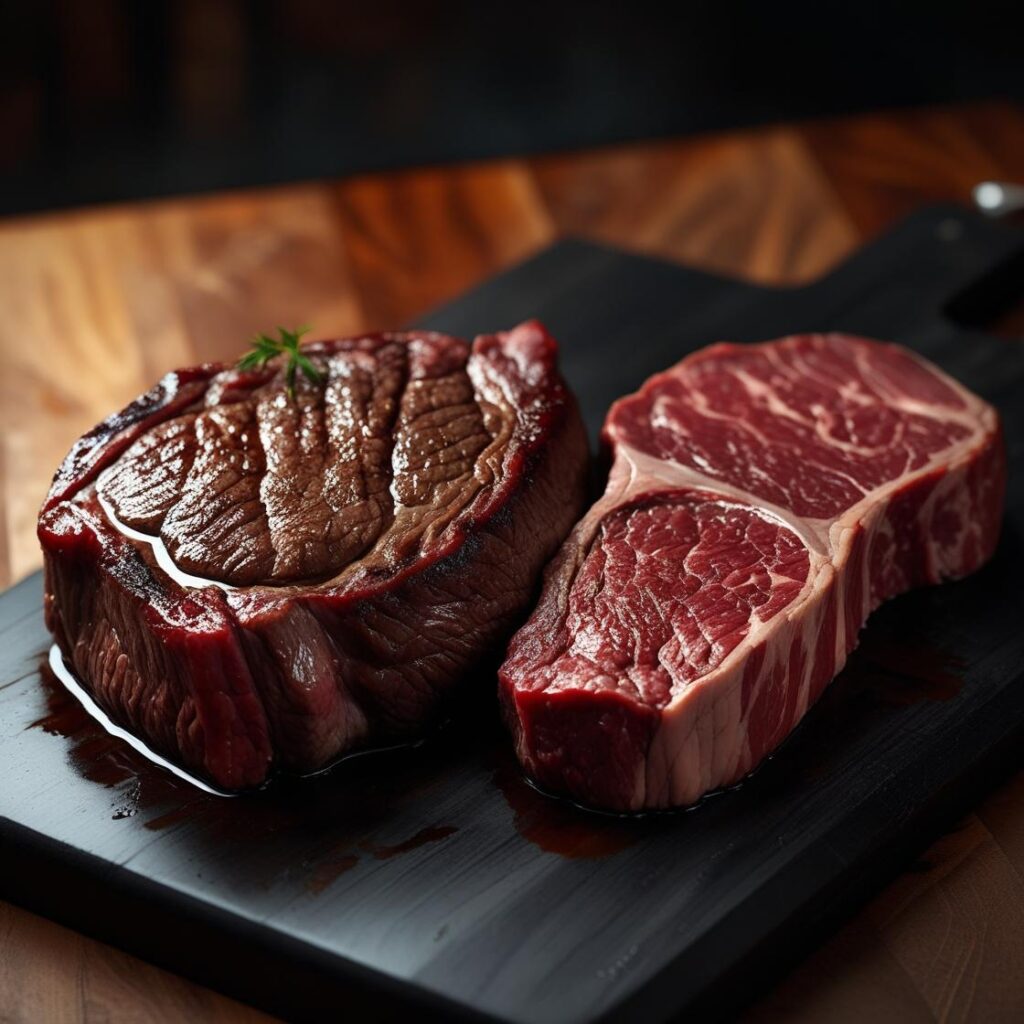

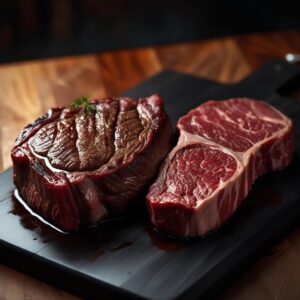
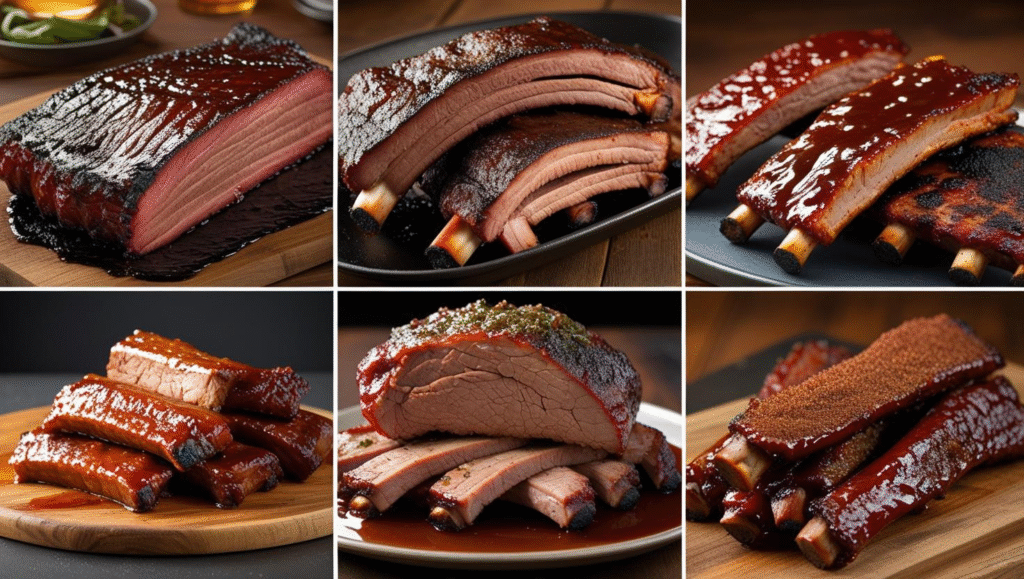

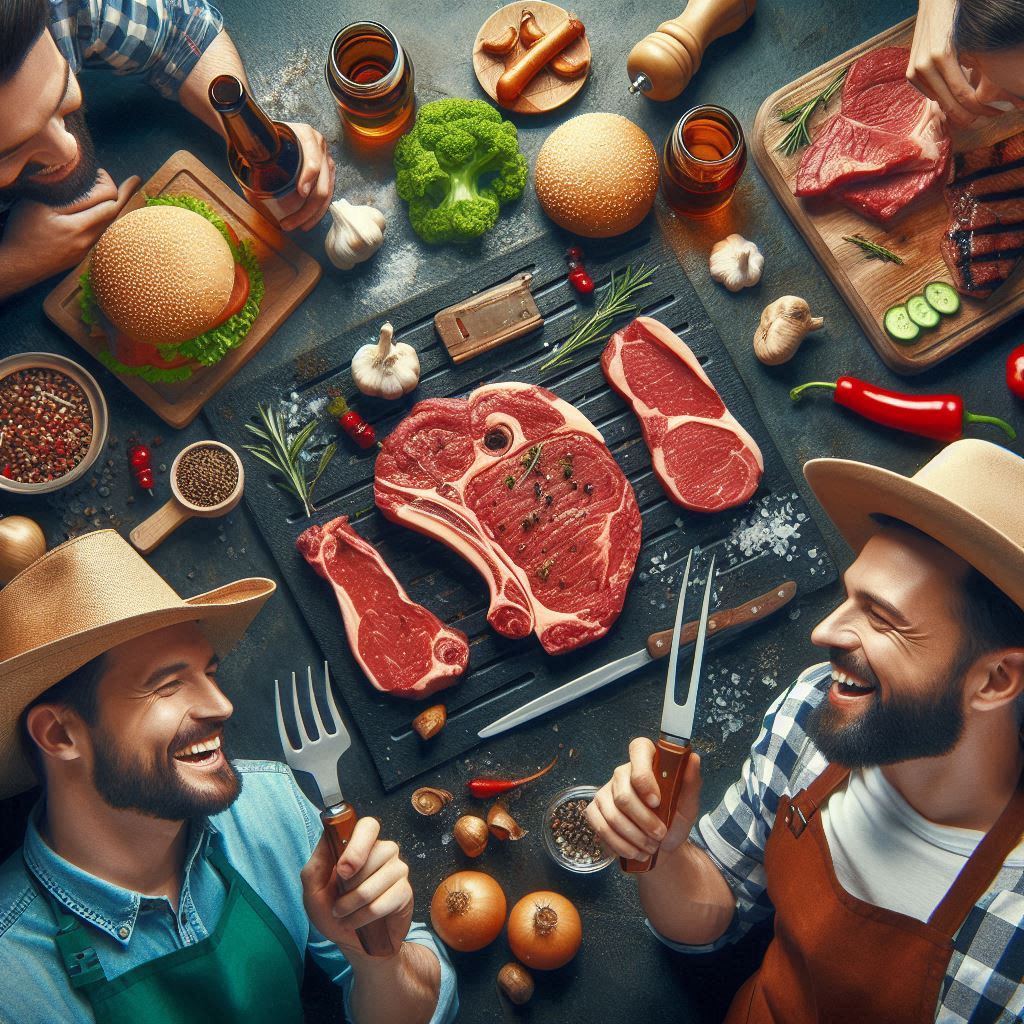
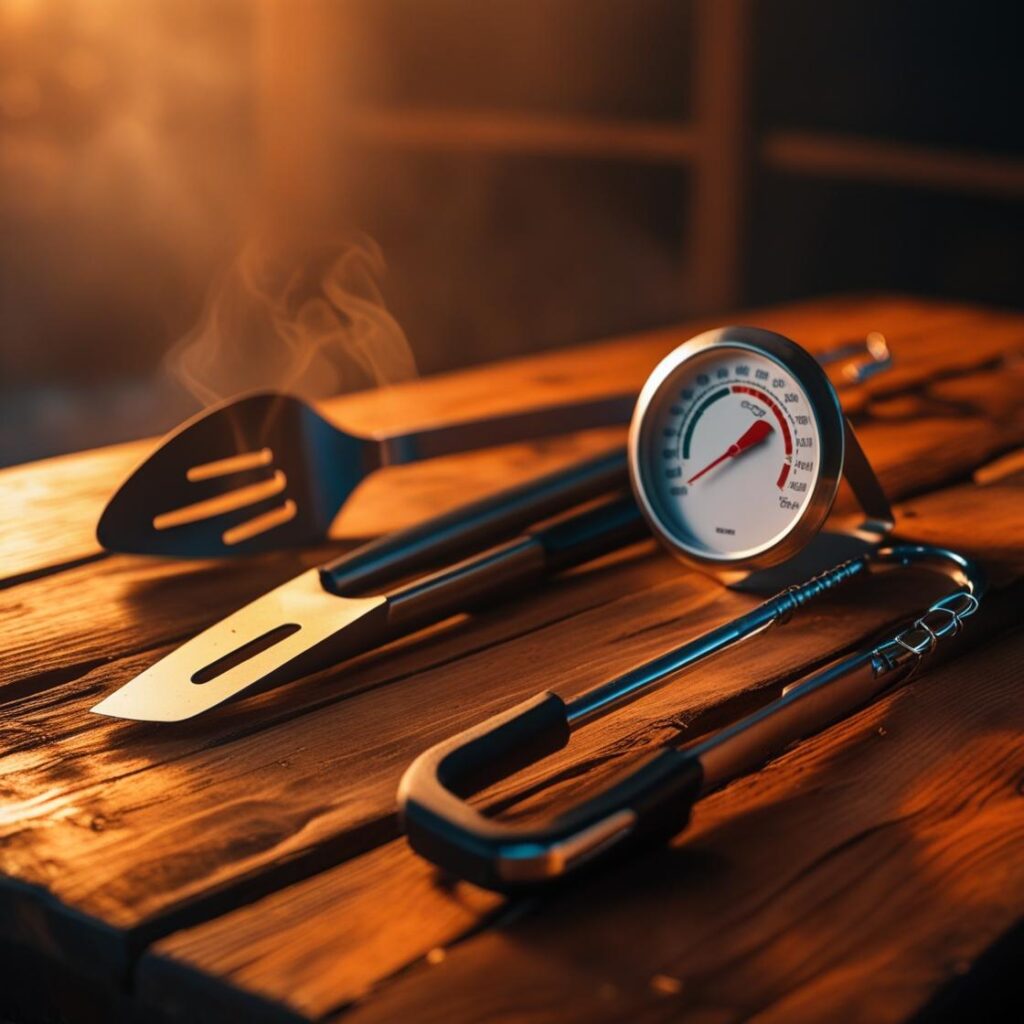
Pingback: Why Resting Steak Makes It Juicy: The Science Behind Perfect Meat [2025]
Pingback: The Science of Meat: Understanding Marbling, Aging, and Tenderness - The Meat Master USA
Pingback: BBQ Grilling vs. Smoking: Key Differences and When to Use Each Method - The Meat Master USA
Pingback: Our Guides and Gear: Your Path to Culinary Mastery | Our Ultimate Guides 2025/26